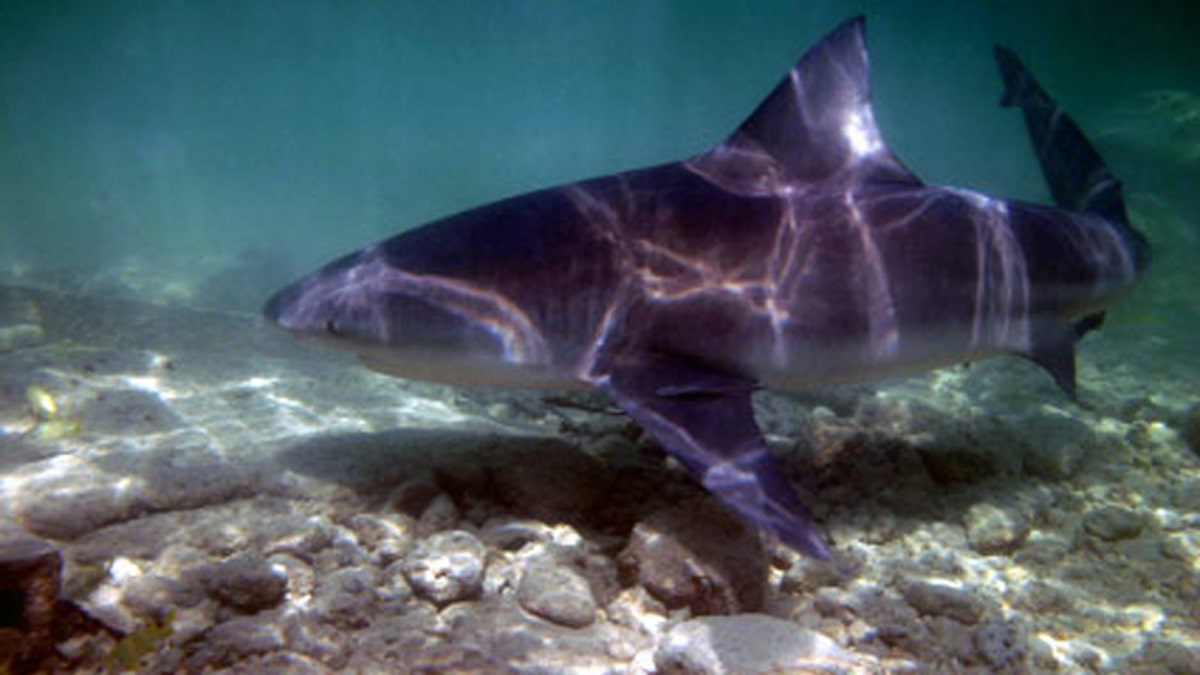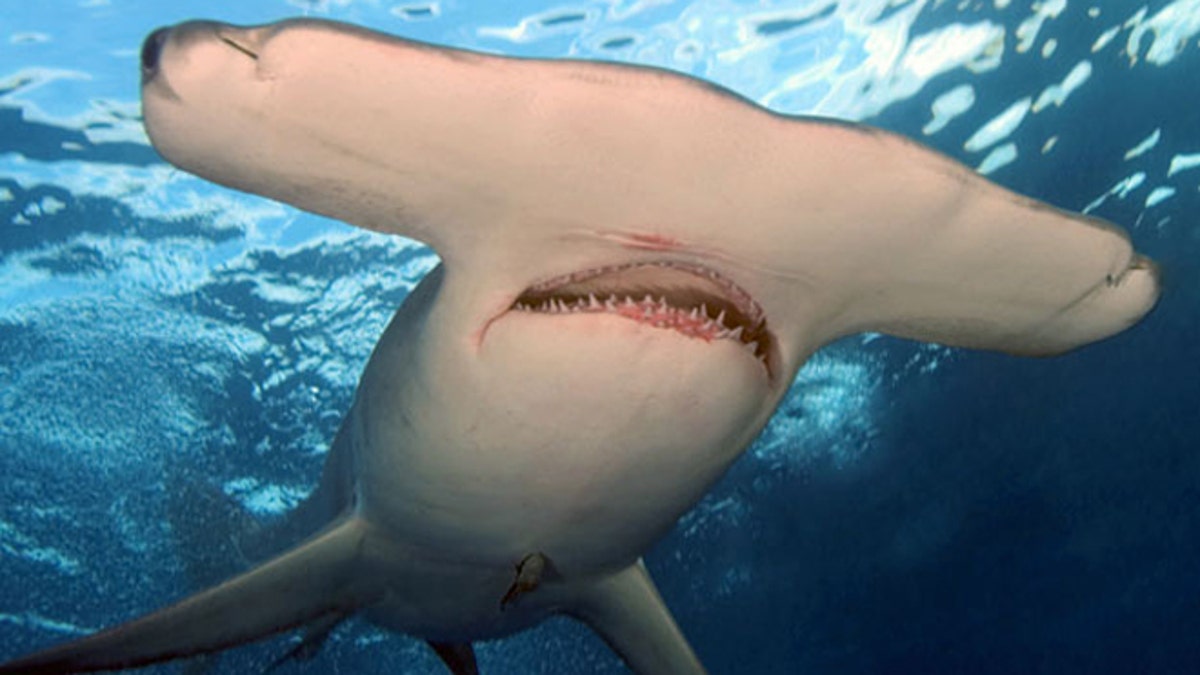Nothing sends ocean swimmers fleeing for shore faster than a fin sighting. The word shark alone is enough to scare most people, immediately calling to mind the menacing theme song for the movie "Jaws"—and, of course, all the gruesome attack scenes therein. But some people look past the sensationalism and all those razor-sharp teeth (up to 15 rows of them) to see sharks for what they really are—streamlined, beautiful animals that are fantastically adapted to their environment. (There’s a reason they’ve been around for 64 million years.)
For those brave souls, the thrill of floating alongside these big fish far outweighs the fright. And in truth, many sharks pose a bigger threat to plankton than to surfers or other fish—though swimming alongside them still lends plenty of bragging rights. In order to do it, you’ll need a boat (in most cases, anyway) and local knowledge to find the fish. The surest bet is to hire a local guide service or naturalist who can take you out, outfit you with snorkels or dive gear, and—perhaps most important—let you know how close is too close.
We scoured the globe to come up with some great guide services that offer you a glimpse inside the watery world of the oceans’ most-feared fish. They’ll take you on daylong dive and snorkeling charters, set you up on a live-aboard yacht for extended, all-inclusive trips, and even load you into a deep-sea submersible to get a Cousteau-style look at some seriously creepy (and rare) creatures.
That underscores another fascinating fact about sharks—more than the much-maligned Great White, there are 470 species of sharks prowling the world's oceans. There are bus-sized, plankton-eating whale sharks that you can snorkel up to and touch; little lemon sharks that you can lift out of the water (literally, but we don't recommend it…their "nibbles" can cause serious injury); streamlined makos that blast through the water at upwards of 25 mph; bottom-dwelling nurse sharks who are sort of like catfish of the sea; and, yes, 5,000-pound apex predators called Great Whites.
It’s up to you what shark you want to see, and how close you want to get. Some you can reach out and touch, others are best kept on the other side of a thick steel cage. With that in mind, here are the best places in the world to get nose-to-snout with sharks.

(iStock)
1. Whale Sharks: Mexico’s Yucatán Peninsula
What better way to celebrate the official Mexican Day of the Whale Shark, on August 30th (yes, it is an official holiday), than by snorkeling alongside these gentle giants? They may be the biggest fish in the world—at up to 40 feet long and weighing in at 50 tons, with mouths that open as wide as five feet—but since they only eat plankton, it’s safe as can be to swim alongside them. The black-and-white spotted behemoths come to the waters off of Punta Sam each summer to feed, from mid-May through September. You can opt for a daylong snorkeling trip with Swim With Whale Sharks or a multi-day outing with Natural Habitat Adventures.

(iStock)
2. Bull Sharks: Beqa Lagoon, Fiji
Few marine creatures are as intimidating as the bull shark. The carnivorous fish grow 11.5 feet in length and 500 pounds in weight. Scientists consider them one of the most aggressive and predatory species in the sea. That may be enough warning for most to stay away, but if flirting with deep-sea danger appeals, then you can sign up for Beqa Adventure Divers’ day-long Shark Dive outings in the protected waters off of Fiji. June is peak season for spotting these migratory animals, though they arrive in the waters off of Fiji as early as mid-May. You might also spot grey reef sharks, Pacific blacktips, whitetip reef sharks, sicklefin lemon sharks, silvertips, tawny nurse sharks and Fiji tiger sharks here this time of year.

(NOAA)
3. Shortfin Mako Sharks: The Southern California Coast, USA
Dubbed the peregrine falcons of the shark world for their torpedo-like bodies, Shortfin Makos are the fastest of all sharks. Many can cruise along comfortably at 22 miles per hour, and one was clocked swimming a bullet-like 46 mph. They can even leap up out of the water, up to 20 feet in the air. These athletic creatures are most commonly found in warmer waters. San Diego-based Shark Chums runs regular diving trips out to the Mako-filled waters off of southern California.

(iStock)
4. Lemon Sharks: The Florida Coast, USA
These small sharks are named for their buttery yellow skin color. Most grow no larger than 12 feet long, but they have been known to attack humans—though it’s usually attributed to fright rather than aggression. Lemon sharks are found mostly off the coast of the southeastern United States and also in the Gulf of Mexico. Jupiter Dive Center, out of Jupiter, Florida, just north of West Palm Beach, offers daylong diving trips to the Florida Reef, a favorite Lemon homesite.

(NOAA)
5. Six-Gill Sharks: The Cayman Trench, Honduras
The prehistoric Six-Gill Shark is a deep-sea creature that dwells up to 6,000 feet below the ocean’s surface. Little surprise, then, that spotting one of these 20-foot-long fish is a rarity. But on one of Shark Diver’s unique submarine-based dive excursions, you can venture 2,000 feet beneath the sea into the Cayman Trench off of Honduras, and spot massive Six-Gills in their native habitat. Shark Diver’s specially designed submarines carry up to three people for six-hour dives.

Great hammerhead shark (Sphyrna mokarran), underwater view (iStock)
6. Hammerhead Sharks: Galapagos Islands, Ecuador
Sneaking up on a hammerhead is next to impossible: Thanks to the positioning of their eyes—set on the sides of their distinctive hammer-shaped snout—they have virtual 360-degree vision. That’s why it’s best to get help from the experts if you hope to spot one in the wild. The folks at Quasar Expeditions have homed in on specific locations, including Wolf Island, in the Galapagos chain, off of Ecuador, where divers can swim alongside schools of hundreds of hammerheads. These sharks, which can grow up to 14 feet in length, can be spotted year-round in this area. Diving excursions are an optional add-on to all cruise expeditions with Quasar Expeditions, while Galapagos Diving offers more scuba-intensive weeklong trips.
See all 12 shark spots at The Active Times
More from The Active Times
Super Safari: Iconic Animals of the National Parks
The World's Most Dangerous Animals
Adventure Travel 2013: The 30 Best New Trips
